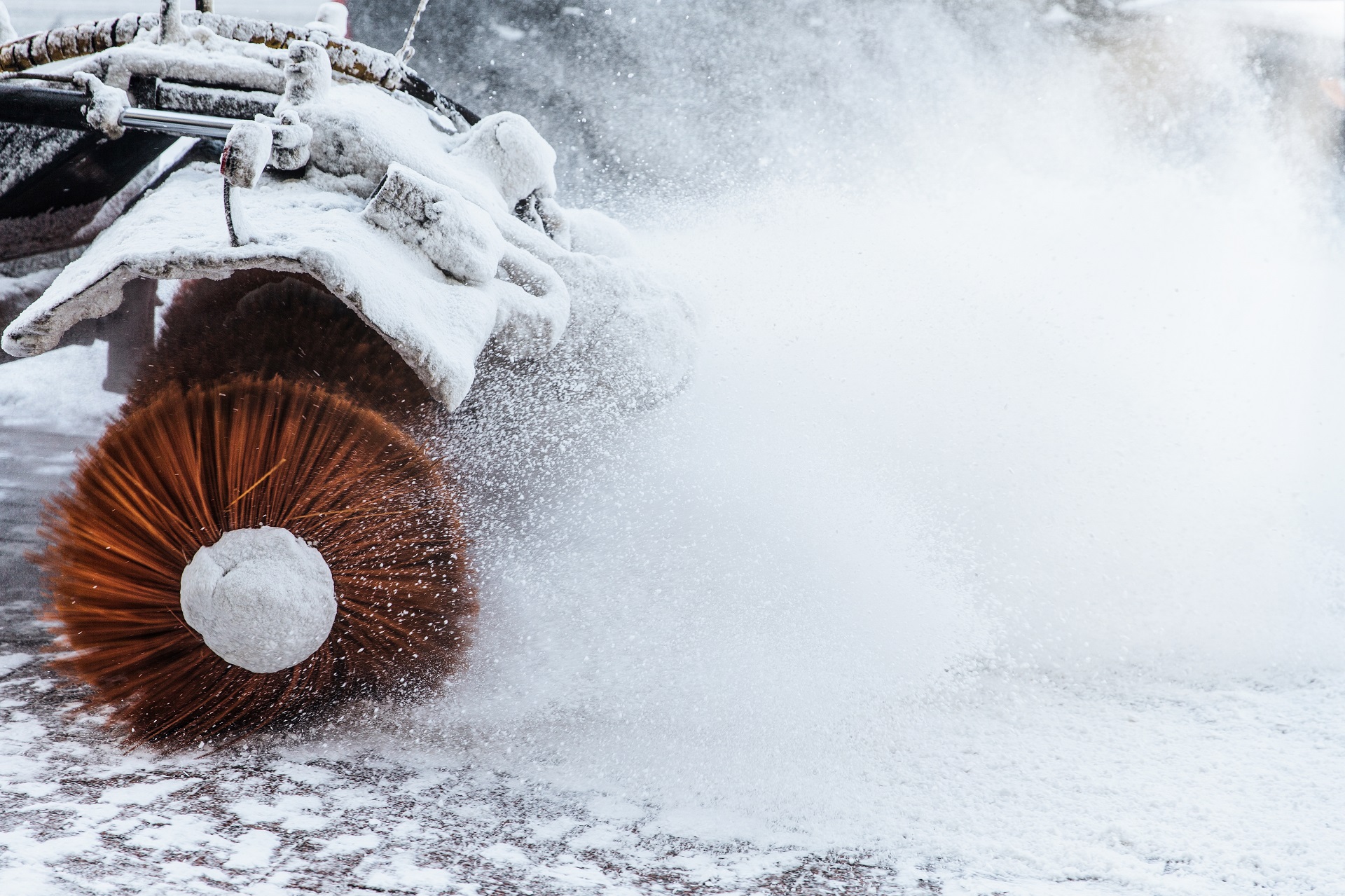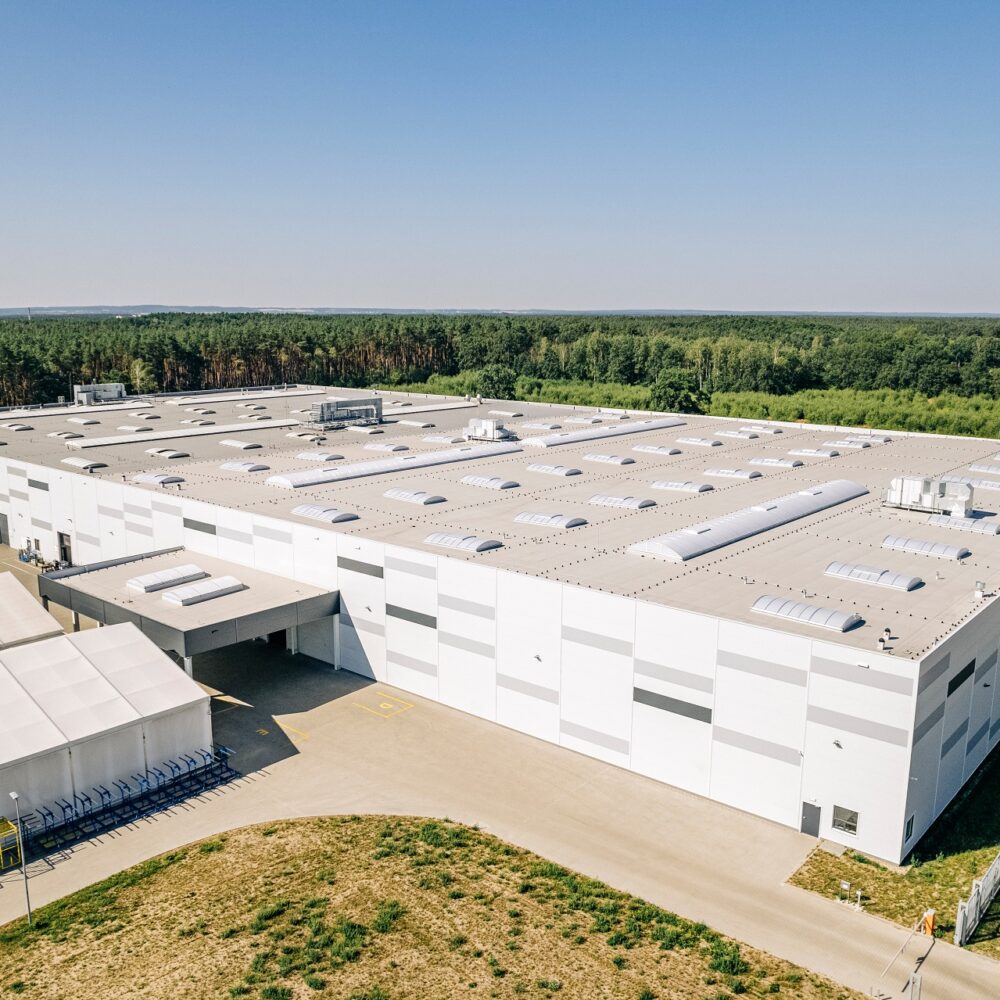
Winter brings additional responsibilities for owners and facility managers. This includes clearing snow from pavements around the building, removing icicles hanging over walkways, but also snow from the roof. The latter becomes particularly important in the case of large-scale industrial halls, which are usually covered with roofs of almost flat construction. How to control the thickness of the snow cover, what are the conditions for clearing snow from roofs and what is included in the roof clearance manual – you will find out in this text.
Snow clearance obligation for roofs – regulations
According to Art. 61(2) of the Construction Law, the owner or manager of a building facility is obliged to ensure, exercising due care, the safe use of the facility in the event of external factors affecting the facility, related to human activity or force of nature, such as: atmospheric discharges, seismic shocks, strong winds, intense atmospheric precipitation, landslides, ice phenomena on rivers and the sea as well as lakes and reservoirs, fires or floods, as a result of which damage is done to the building object or an immediate threat of such damage, which may cause a threat to human life or health, the safety of property or the environment.
Since the obligation to clear snow from roofs rests with the owners or managers of the facilities, it is their responsibility to ensure the safety of the structure. They should therefore know the value of the load for which the building has been designed and systematically compare it with the load occurring on the roof. In practice, however, this can prove extremely difficult to do, as one m3 of snow – depending on the conditions – takes on a different density and therefore weight. It can be fluffy, lagging or wet.
One way to avoid the problem of snow accumulation is to adopt higher loads at the design stage than those based on the standard for the region. Systematic snow removal from the roof can also be an effective solution, especially during periods of heavy rainfall. When is snow removal from roofs necessary?
Conditions for snow clearance from steel hall roofs
Although clearing snow from flat roofs after a heavy snowfall seems like a natural necessity, it is not so clear-cut for logistics, production or exhibition halls. Why? Industrial facilities with such a large roof area are designed to adequately cope with the additional load on the roof, including that resulting from precipitation. With how much precipitation should I start clearing snow from the roof?
The permissible amount of snow and ice on the roof is defined in detail by the Polish Standard PN-80/B-02010. The values given will vary depending on the altitude and snow load zone. And there are five of these highlighted in the standard – they are shown in the map below:

Source: https: //inzynierbudownictwa.pl/obciazenie-sniegiem-obiektow-budowlanych/
Note that the data refers to the snow load on the ground, and this has a high thermal inertia in our climate – it accumulates heat. The situation is different on well-insulated roofs, which are colder than the ground. This causes the snow to melt more slowly and therefore remain longer on them. Therefore, snow thickness measurements should always be taken directly on roofs.
It is also important to know that the volume weight of snow varies dynamically and depends on, among other things:
- duration of snow cover deposition – weight increases with time
- temperature fluctuations
- changes in atmospheric humidity
- the slope of the roof, including its exposure to sunlight.
Therefore, the values for the permissible cover thickness for the individual zones take these factors into account as well. These are presented in the table below:

The location of the industrial hall is one of the factors that is taken into account when designing it – the design of a hall to be built in the centre of Poland will therefore differ from the design of a building located in a mountainous area, which will require a more robust structure.
Flat roof and snow – monitor before you decide to shovel snow
Clearing snow from the roofs of steel halls, which often cover several hectares, is a logistically demanding, dangerous and really expensive operation. Therefore, owners and managers of such facilities delay the decision to clear the snow from the roof, relying on various measuring and calculation systems. These can be placed on the roof:
- snow gauges, simple devices that make it possible to determine the thickness of the snow cover at a given point on the roof
- snow meters which can determine the volume weight of snow
- automatic snow scales.
Quite obviously, the measurements provided by all of these devices are not very accurate, so relying solely on such solutions is highly risky. Besides, procrastinating on shovelling snow from the roof does not always turn out to be a good decision. As we pointed out earlier, snow accumulation causes slickness, so it will be much more difficult to remove. In addition, damage to the roofing layers can occur during such work.
The clearing of snow from the roofs of large-scale halls is therefore best left to specialist companies. Snow can be cleared manually using suitable shovels, leaving at least a 10 cm layer of snow on the roof. Another non-invasive snow removal method is to sprinkle salt on the roof to dissolve the snow cover. When starting to clear snow using this method, however, it is important to ensure that the housing materials are salt-resistant. For large-scale facilities, mechanical snowblowers are also often used.
Artificial intelligence supports safety
Therefore, safety issues related to the use of large halls are increasingly being supported by artificial intelligence. What solutions are being referred to? About intelligent roof deflection monitoring systems, such as Sense S-One.
It consists of a set of laser sensors and measuring discs, the number of which depends on the size of the roof and its type of construction. The sensors are fixed at the point of support of the truss, while the measuring disc is fixed at the mid-span of the truss. The deflection measurement, with a 1-milimetre accuracy, is taken at the plane of the roof. The sensors are provided with inclinometers that correct the deflection measurements and continuously measure the verticality of the columns. The solution will prove useful not only during heavy snowfall – indicating when it is necessary to clear the roof of snow – but also when additional loads are planned for the roof, e.g. in the form of a PV system mounted on it.
Instructions for clearing snow from flat roofs
We now know who has a statutory obligation to clear snow from roofs and at what point this activity becomes necessary. It is now time to remind the basic health and safety rules when working on roofs in winter conditions.
At the outset, it should be noted that roof snow removal is work at height with a number of clearly defined regulations. It is a demanding and dangerous task, during which the worker is additionally exposed to low temperatures, strong gusts of wind and other severe weather conditions.
Who can perform it?
- a person who holds a current medical certificate of no contraindication to work at height
- a person who has received adequate instruction during which they have been made aware of the risks in carrying out this work.
In addition, it is imperative that a worker clearing snow from roof to use of personal fall arrest equipment, e.g. special harnesses with a safety rope, helmet, weather-appropriate footwear. It is the responsibility of the employer to provide these. It is also the employer responsibility to designate and exclude hazardous areas where there is a risk of injury from snow being removed from the roof.
Due to the nature of the work and the need for specialised solutions, it is advisable to entrust the clearing of snow from the roof to experts, i.e. companies specialising in this type of winter work at height.



